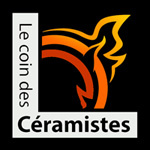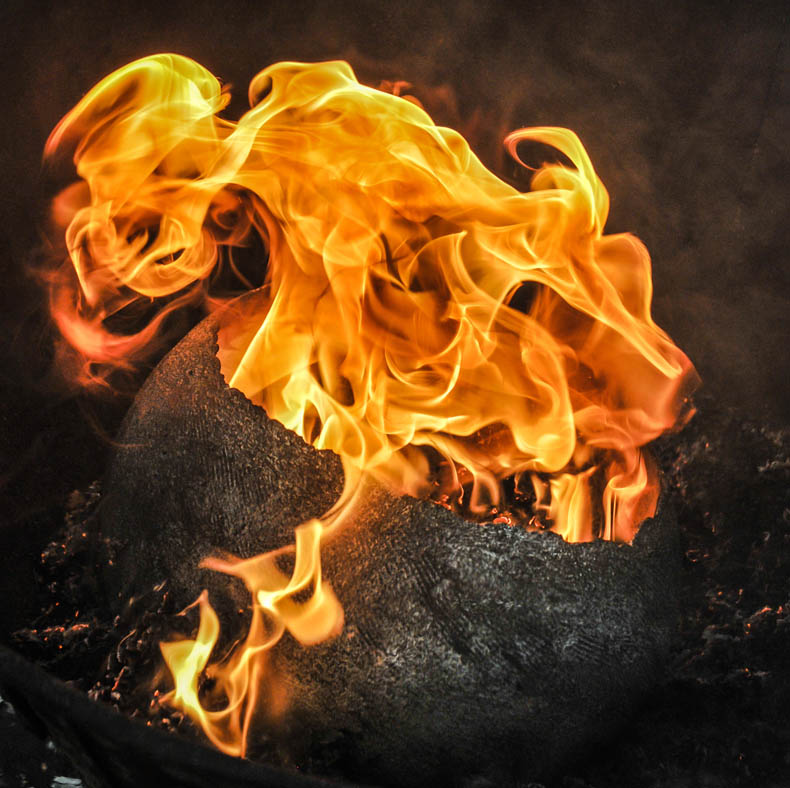

Le raku nous vient du Japon où cet art traditionnel, traduisant par sa technique, ses formes et son esprit, des notions du Bouddhisme Zen et du Taoïsme. Il était pratiqué à l’occasion de la cérémonie du thé
Contrairement aux cuissons classiques où il faut attendre le refroidissement du four à gaz les pièces émaillées sont sorties incandescentes à 960°C à l’aide de pinces. Puis elles sont mises au contact de copeaux de bois qui s’enflamment spontanément, créant ainsi une réaction d’oxydation (1) ou une réaction de réduction (2).
- 1 oxydation : transformation des oxydes métalliques contenus dans l’émail - cuivre, fer, plomb - par combustion en présence d’oxygène
- 2 réduction : perte de l’oxygène des oxydes métalliques contenus dans l’émail, par combustion dans des bidons fermés - sans oxygène donc - les couleurs métallisées sont révélées.
D’autres émaux sont utilisés pour leur capacité à se craqueler lors du choc thermique provoqué par la sortie les objets incandescents. Le carbone dégagé par la combustion des copeaux ou végétaux (noir de fumée) envahit le tesson et révèle ces craquelures. Après un temps plus ou moins long, les objets sont plongés dans l’eau afin d’éviter qu’ils ne se ré-oxydent à l’air.
Plus que de la chimie, il s’agit là en quelque sorte d’Alchimie. Car tout se joue dans la combinaison aléatoire des quatre éléments : le feu, l’air, la terre et l’eau.
Raku comes from Japan where this traditional art, resulting in its technique, its forms and its spirit, the concepts of Zen Buddhism and Taoism. It was practiced during the tea ceremony.
Today features raku firings remain: their spectacular and sometimes unexpected results (although the research is to control the elements and their interactions with materials). They are experienced by those involved as a special time.
Unlike conventional cooking where you have to wait for the cooling gas oven, enamelled parts are out incandescent 960 ° C using pliers. Then they are brought into contact with wood chips which spontaneously ignite, thus creating an oxidation reaction (1) or a reduction reaction (2).
- 1 Oxidation: transformation of the metal oxides contained in the enamel - copper, iron, lead - by combustion in the presence of oxygen
- 2 Reduction: loss of oxygen content of the metal oxides in the enamel, by combustion in closed containers - without oxygen - hence the metalized colours are revealed.
Other enamels are used for their ability to crack during thermal shock caused by the outlet hot objects. The carbon released by burning wood chips or plant (black smoke) invades the shard and reveals the cracks. After a more or less long time, the objects are immersed in water to prevent them from re-oxidize in air. More than chemistry, this is sort of alchemy. Cause everything is played in random combination of four elements: fire, air, earth and water.